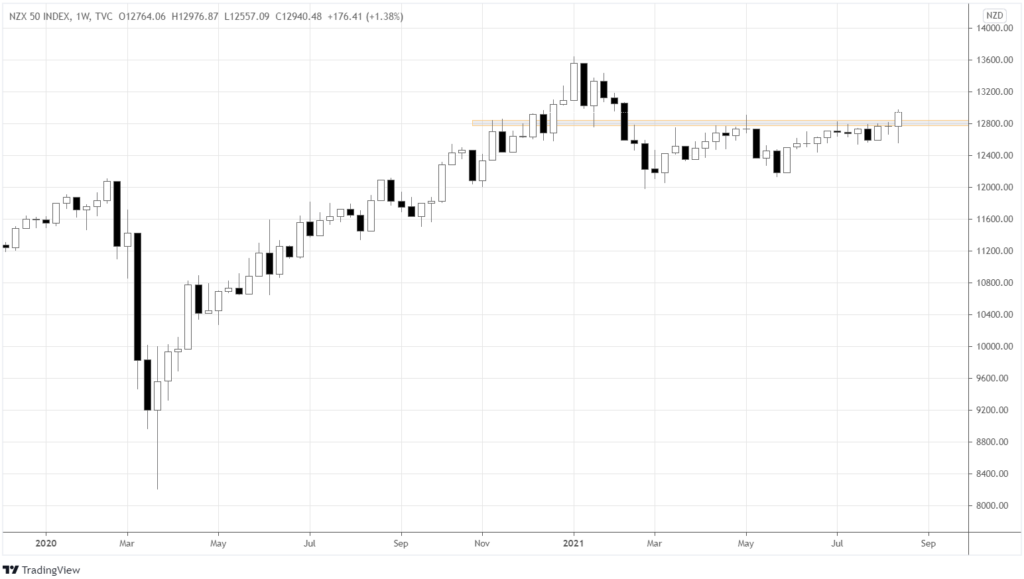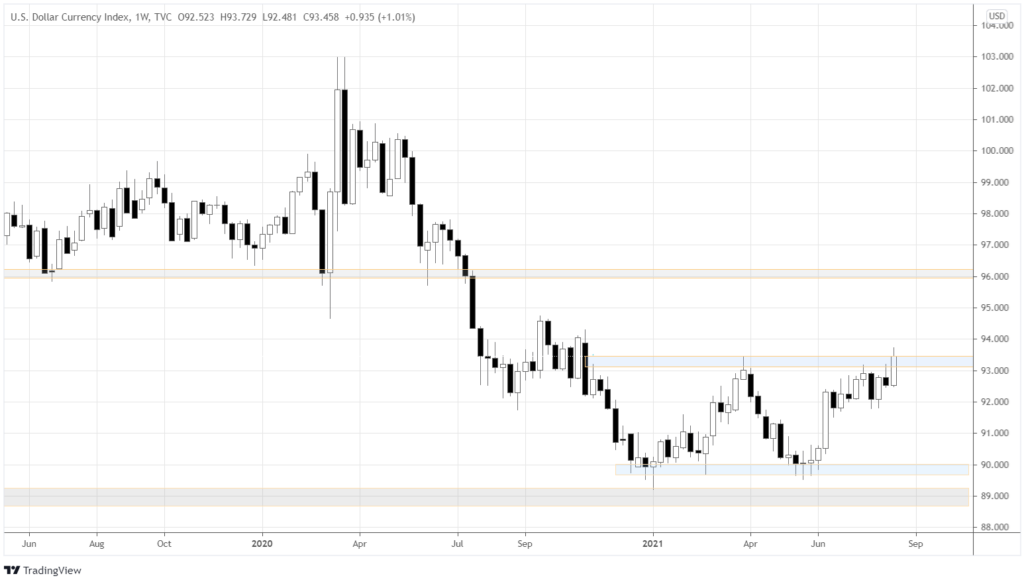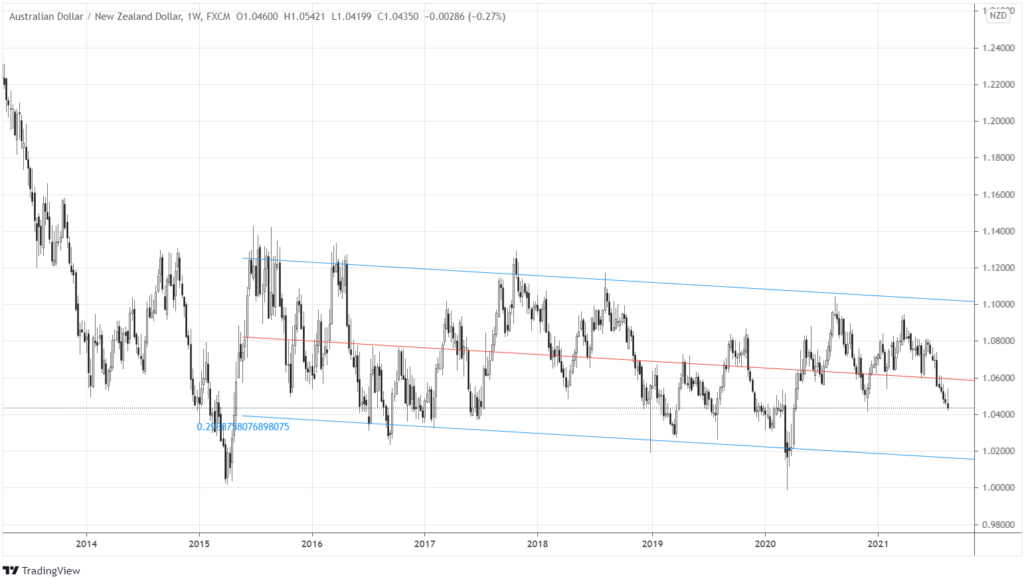It’s the fear mode in the markets. Commodities and risk-on currencies look increasingly vulnerable. Last week, the new Delta variant cases in New Zealand caused the nationwide lockdown, triggering the risk-averse sentiment in the forex market and the stock indices in Asia and Oceania.
The stock markets of the closest New Zealand’s trade partners such as China, Australia, South Korea, and Japan took a hit, closing the week negative. Surprisingly, New Zealand’s NZX 50 managed to finish the week with the 1.38% gain, breaking above the critical resistance around 12800.

Such a price action hints that some equities risk-takers believe the spread of the virus will be short-lived.
Meanwhile, it seems Fed isn’t in a hurry to start tapering, letting US markets recover from the losses at the end of the week.
Fed’s preparations and DXY breakout
According to FOMC minutes on Wednesday, August 18th, Fed is cautiously preparing for tapering later this year. However, the document emphasized that there’s no “mechanical link” between the tapering and the rate hike timing – the decisions require different standards to be met. Thus, although Fed may decide to stop asset purchases soon, it doesn’t mean that the rate hike is at hand.
Policymakers remain conservative about the recovery from the pandemic, expecting no smooth way out. The spread of the Delta variant may delay the full reopening, so it shouldn’t be a surprise to see the shortage of labor.
On Friday, Fed’s often-hawkish Kaplan got softer on tapering, mentioning that he would readjust his views depending on the GDP figures. US stocks reacted, with the NASDAQ index gaining 1.19%.
Stocks love any hints of rate hike delay. However, the US dollar is strengthening too, possibly due to the new Delta cases in New Zealand and the optimism around the hawkish Fed.
It was a critical week for the US dollar, with DXY closing above the resistance 93.0 – the upper border of the current range. Therefore, we have an upward breakout in DXY.

Swing and position traders may start considering buying DXY, with the target around 96.0. Dollar bulls can hide their stops below the last week’s low, with more aggressive buyers placing stops right under 93.0.
On the one hand, you may put off buying until the US session on Monday, though. the market would probably pull back after Friday’s growth, as the short-term bulls take profits. The absence of critical economic data during Asian and European sessions should keep traders from rushing to buy the US dollar.
On the other hand, the new Delta cases in New Zealand, reported on Saturday, may shock the markets from the early opening on Monday. So, you should look at the initial market reaction during the Oceania-Asia session.
The NZD is in trouble
It’s not just the 21 new reported cases that are frightening the market, but the details of who the infected people were in contact with. The risk groups include people from Auckland University Ball, casino, public transportation. Therefore, there is a risk of new cases arising next week. PM Jacinda Ardern decided to extend the nationwide lockdown beyond Tuesday.
The weekly NZDUSD chart below shows the extreme vulnerability of NZD. The pair closed reliably below the critical support 0.7000, inviting more bears to join the momentum.

The breakout of the 0.6800 support may accelerate the decline. The move-invalidation point would be above last week’s high or 0.7000.
Another way to be bearish on the risk assets is to short AUD. Despite the new infections in New Zealand, aussie is still relatively weaker.

In the weekly AUDNZD chart above, the pair moves down, away from the regression channel’s mean (see the red line). Thus, we can expect AUD to be relatively weak until the price reaches 1.0200. The move above 1.06 would invalidate the scenario.
Conclusion
The Fed remains cautious about the tapering, giving US equities further room to grow. At the same time, the spread of the Delta variant in New Zealand caused fear in the markets, putting pressure on NZD and supporting the US dollar, enabling the greenback to break above the critical resistance. Traders can take advantage of the kiwi’s decline or even short the relatively weaker AUD.



